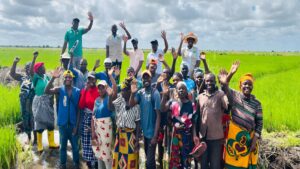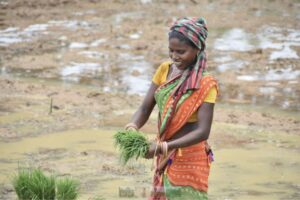
“The world is experiencing three simultaneous revolutions: in molecular biology and genetics, in computational power and storage capacity, and in communications,” observes Dr. Robert Zeigler, director general of the International Rice Research Institute (IRRI). “The computational revolution allows scientists around the world to tackle almost unimaginably complex problems as a community, and in real time. Although there are no silver bullets, rice production can be revitalized with the help of new technologies.” Agricultural research has recently joined the ranks of scientific disciplines that use intricate computations in their research methods.
Traditionally, supercomputers were associated with research areas that required very large amounts of calculations and huge volumes of complex data such as astrophysics and geophysics. The first generation of supercomputing devices was often purpose-built machines that required specialized care in terms of maintenance. They also needed specific software development skills to optimize the use of the multiprocessor architecture. Now, it is possible to build a device that has more capacity than the early supercomputers using off-the-shelf components. At IRRI, researchers use several number-crunching devices ranging from a specialized high-performance computing (HPC) device to a gaming device modified to run parallelized statistical analyses.
 Some complex tasks are daunting even for the largest super computing equipment. The Nutritious Rice for the World project, in which IRRI participates, aims to predict the structure of proteins of major strains of rice. The study intends to help farmers breed better rice varieties with higher crop yields, promote greater disease and pest resistance, and use a full range of bioavailable nutrients that can benefit people around the world, especially in regions where hunger is a critical concern (watch related video Nutritious Rice for the World on YouTube). This project, run by the Computational Biology Research Group at the University of Washington, requires a massive amount of computing time to complete. This is where the World Community Grid comes in.
Some complex tasks are daunting even for the largest super computing equipment. The Nutritious Rice for the World project, in which IRRI participates, aims to predict the structure of proteins of major strains of rice. The study intends to help farmers breed better rice varieties with higher crop yields, promote greater disease and pest resistance, and use a full range of bioavailable nutrients that can benefit people around the world, especially in regions where hunger is a critical concern (watch related video Nutritious Rice for the World on YouTube). This project, run by the Computational Biology Research Group at the University of Washington, requires a massive amount of computing time to complete. This is where the World Community Grid comes in.
The World Community Grid offers public research projects an alternative to the large investments required to run such projects on traditional supercomputers by distributing computational tasks over the Internet to volunteers who donate their computers’ idle time to this project. Since the World Community Grid was launched on 12 May 2008, the amount of computing time donated to this project at the time of writing was equivalent to a single computer running for 16,687 years. To put this into perspective, a fairly large HPC device with 32 nodes, each having four modern four-core processors, would need to run continuously for more than 32 years to achieve what has been accomplished within a year and a half through the assistance of this unique community of volunteers.
All workstations at IRRI are connected to the institutional network that contributes to the Nutritious Rice for the World project. When a workstation becomes idle for 10 minutes, the Berkeley Open Infrastructure for Network Computing or BOINC software kicks in and runs tasks associated with the projects on the World Community Grid rather than displaying pretty animated pictures of a screensaver. Note that leaving workstations on at all times is not advisable as this will consume large amounts of electricity. The data obtained at IRRI are the result of idle moments when people have to make a phone call, attend a meeting, visit the washroom, read a newspaper, etc. By the time we celebrate IRRI’s 50th anniversary in 2010, the Institute will have donated more than 100 years of computer time to research programs on the World Community Grid.
Anyone who owns a computer that is connected to the Internet can participate in this project. The required BOINC software can be downloaded for computers running different versions of Microsoft Windows and Apple Mac, and for most versions of Linux. Downloads and simple configuration instructions are available from the World Community Grid Web site. And, while you are at it, you may want to join the IRRI team, and we will include your statistics in our team results!
_________________________________
Mr. Marco van den Berg is IRRI’s chief information officer









